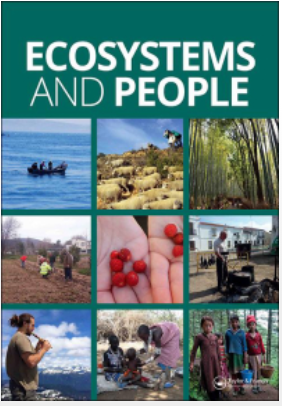Social and temporal dynamics mediate the distribution of ecosystem service benefits from a small-scale fishery
IF 3.7
Q1 Agricultural and Biological Sciences
引用次数: 3
Abstract
ABSTRACT Small-scale fisheries are important for the livelihoods and food security of millions of people in low-income countries. Sustainably managing these dynamic social-ecological systems requires understanding links between ecosystems and human well-being: the focus of ecosystem service approaches. However, in-depth exploration of how co-production and temporal dynamics shape ecosystem benefits in small-scale fisheries remain nascent. There is thus an opportunity to better investigate pathways through which small-scale fisheries support food security. To address this gap, we ask how households allocate seafood landings across different uses, depending on supply and season. Using a daily survey, we collected panel data on landings from 15 households on Atauro Island, Timor-Leste, over six 1-week periods across three seasons, representing 630 survey days and 179 fishing trips. We found households mediate the pathways through which seafood contributes to food security. Specifically, the proportion of landings eaten, sold or shared changed with the amount landed and across seasons. As landings increased, households ate a smaller proportion and sold a greater proportion. The greatest proportion of landings were sold in the preparation season, when households save money to buy staple foods. Landings were shared with family and kin, reflecting the importance of seafood for social capital and community food security. Put broadly, households shaped a dynamic and non-linear (not directly proportional) relationship between service supply and benefits. Our findings demonstrate that seasonal context and livelihood priorities shape seafood provisioning benefits in small-scale fisheries. Careful consideration of temporal scale in ecosystem service assessments is critical for sustainable management of small-scale fisheries.社会和时间动态调节了小规模渔业生态系统服务效益的分配
小规模渔业对低收入国家数百万人的生计和粮食安全至关重要。可持续地管理这些动态的社会生态系统需要理解生态系统与人类福祉之间的联系:生态系统服务方法的重点。然而,对小规模渔业中共同生产和时间动态如何影响生态系统效益的深入探索仍处于初级阶段。因此,有机会更好地调查小规模渔业支持粮食安全的途径。为了解决这一差距,我们询问家庭如何根据供应和季节将海产品分配到不同的用途。通过每日调查,我们收集了东帝汶Atauro岛15个家庭的登陆面板数据,为期6周,跨越3个季节,共630个调查日和179次钓鱼旅行。我们发现,家庭调节了海产品促进粮食安全的途径。具体来说,吃、卖或分享的上岸物品的比例随着上岸物品的数量和季节而变化。随着着陆次数的增加,家庭吃的比例越来越小,卖的比例越来越大。在准备季节出售的农产品比例最大,因为此时各家都在攒钱购买主食。与家人和亲属一起登陆,反映了海产品对社会资本和社区粮食安全的重要性。广义地说,家庭在服务供给和利益之间形成了一种动态的、非线性的(非成正比的)关系。我们的研究结果表明,季节性背景和生计优先事项影响了小规模渔业的海鲜供应效益。在生态系统服务评估中认真考虑时间尺度对小规模渔业的可持续管理至关重要。
本文章由计算机程序翻译,如有差异,请以英文原文为准。
求助全文
约1分钟内获得全文
求助全文
来源期刊

Ecosystems and People
Agricultural and Biological Sciences-Ecology, Evolution, Behavior and Systematics
CiteScore
7.80
自引率
11.30%
发文量
40
审稿时长
42 weeks
期刊介绍:
Ecosystems and People is an interdisciplinary journal that addresses how biodiversity and ecosystems underpin human quality of life, and how societal activities and preferences drive changes in ecosystems. Research published in Ecosystems and People addresses human-nature relationships and social-ecological systems in a broad sense. This embraces research on biodiversity, ecosystem services, their contributions to quality of life, implications for equity and justice, and the diverse and rich ways in which people relate to nature.
 求助内容:
求助内容: 应助结果提醒方式:
应助结果提醒方式:


